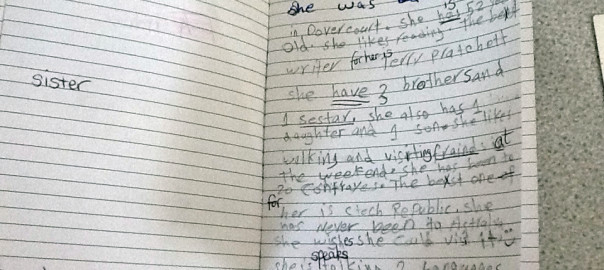17 February, 2016
When I was working at IH Newcastle, I taught the same group for 20 hours a week, four hours a day, divided into two two-hour lessons. That’s quite a lot of time with the same group, and yet I sometimes found it difficult to get to know the students with any kind of consistency or depth, especially because there was so much coming and going: new students could arrive Monday morning, Monday afternoon and/or Tuesday morning, and every Friday some students left.
I decided to try an idea I’d first heard about at TESOL France in November 2011: journal writing. By the time I left Newcastle I’d done it successfully with groups at three different levels, with slightly different approaches in each case.
For all three levels, students wrote in small A6 notebooks from the school. I think this is the perfect size, as they’re not too daunting and it’s relatively easy to fill a page. When I introduced the journals for the first time, I asked the students to tell me anything they thought I should know about them. They could also ask me questions, about life in the UK, about English, or about me. I think it’s only fair to give them the chance to ask about me, if I want them to talk about themselves in this way. They had time in class to write their response. I then collected the journals and spent about an hour each day responding to all of them, with some correction (depending on whether I wanted that particular student to focus on accuracy or fluency when writing). As far as possible, my response consisted of answering any questions they’d asked me, then asking further questions as a prompt for the next day’s journal writing. The questions could be linked to things the students had told me, or on a completely new topic. The topics we covered in the journals were incredibly wide-ranging, and differed from student to student. They also informed some of the lessons I taught, by showing me what my students were interested in. Here are some of the things I remember talking about:
…to continue reading, please, check Sandy Millin’s website


